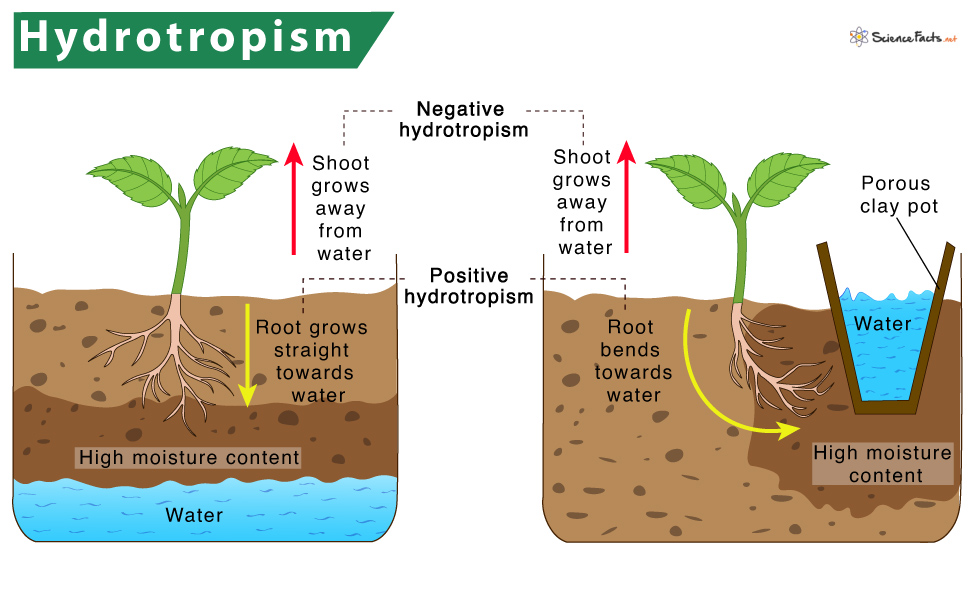Hydrotropism
What is Hydrotropism
Hydrotropism is a type of tropic movement by which some plant parts, specifically root and stem, tend to move towards or away from water stimulus.
The term ‘hydrotropism’ is a combination of two words, ‘hydro’ and ‘tropism’. Here, ‘hydro ‘means ‘water’, and ‘tropism’ stands for ‘tropic movement’. Tropic movement is a directional movement displayed by a plant in response to any external stimuli, such as light, gravity, chemical, touch, temperature, and water. In this case, the external stimulus is water or moisture.
Example: The movement of plant roots towards water.
Its Types
Based on whether the plant part moves towards or away from the water stimulus, hydrotropism can be of two types:
1. Positive hydrotropism: Here, the plant part tends to grow towards moisture or water stimulus. Example: Growth of plant roots towards relatively higher humidity or moisture content.
2. Negative hydrotropism: In this type, the plant part grows away from the water stimulus. Example: Growth of stem away from the moisture content.
How does Hydrotropism Work in Plants
As discussed, the roots grow towards water as a response to hydrotropism. First, the root caps sense the moisture content and send a signal to the elongation zone of the root. Thus, the roots begin to grow towards that stimulus in search of more water. As water continuously moves in soil, the moisture gradient in the soil also keeps on changing. So, roots constantly change direction in response to the soil moisture content.
Why is Hydrotropism Important
- It modifies root growth towards areas with higher moisture content, thus helping in water uptake.
- It helps plants to obtain water efficiently even under drought conditions.
-
References
Article was last reviewed on Thursday, February 9, 2023




